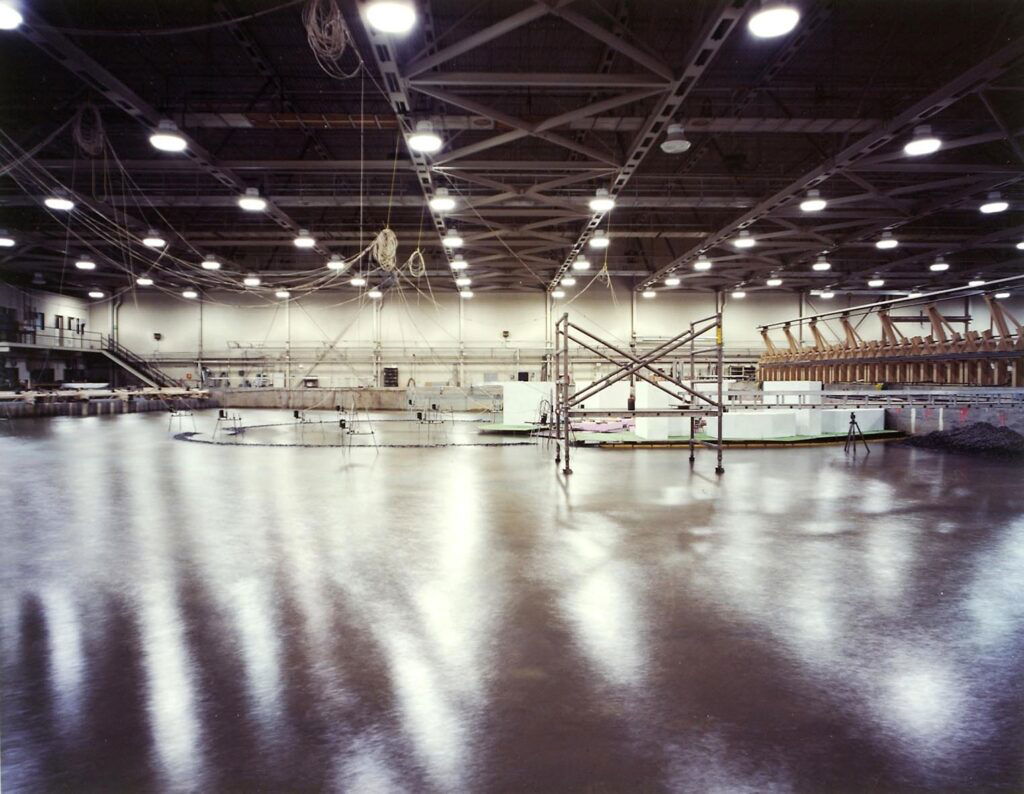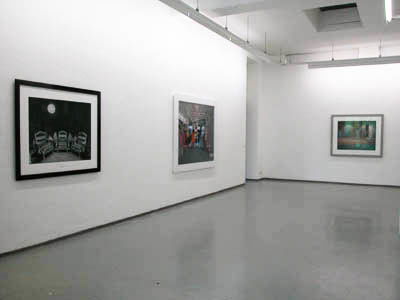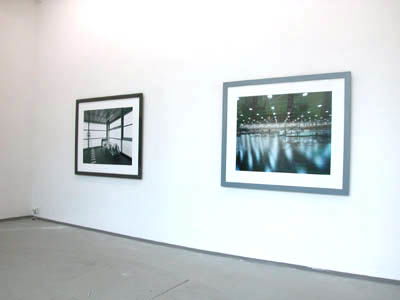Lynne Cohen
No Man’s Land
Lynne Cohen has been photographing interiors for over 30 years. Initially men’s clubs, living rooms, banquet halls, beauty salons and later military installations, laboratories, foyers, classrooms and spas. Lynne Cohen’s photographs are about bizarre, eerily deserted interiors. Usually it is laboratories, public buildings such as schools, swimming pools, military installations, office buildings or haunted living spaces in the USA and Canada that are succinctly presented to us. These places of public life that the artist visits contain no concrete human traces.
The confrontation between the individual and the artificial world, in which perfect robots are pitted against human vulnerability and defectiveness, refers to George Orwell’s future scenarios. Who are the real actors in these spaces of action? Cohen positions the aspects of technology against those of the individual, attempting to start a dialogue between these extreme poles. The artist also raises questions about general patterns of action. What influences human behaviour? How much do unperceived, unreflective power structures intervene in our daily lives?
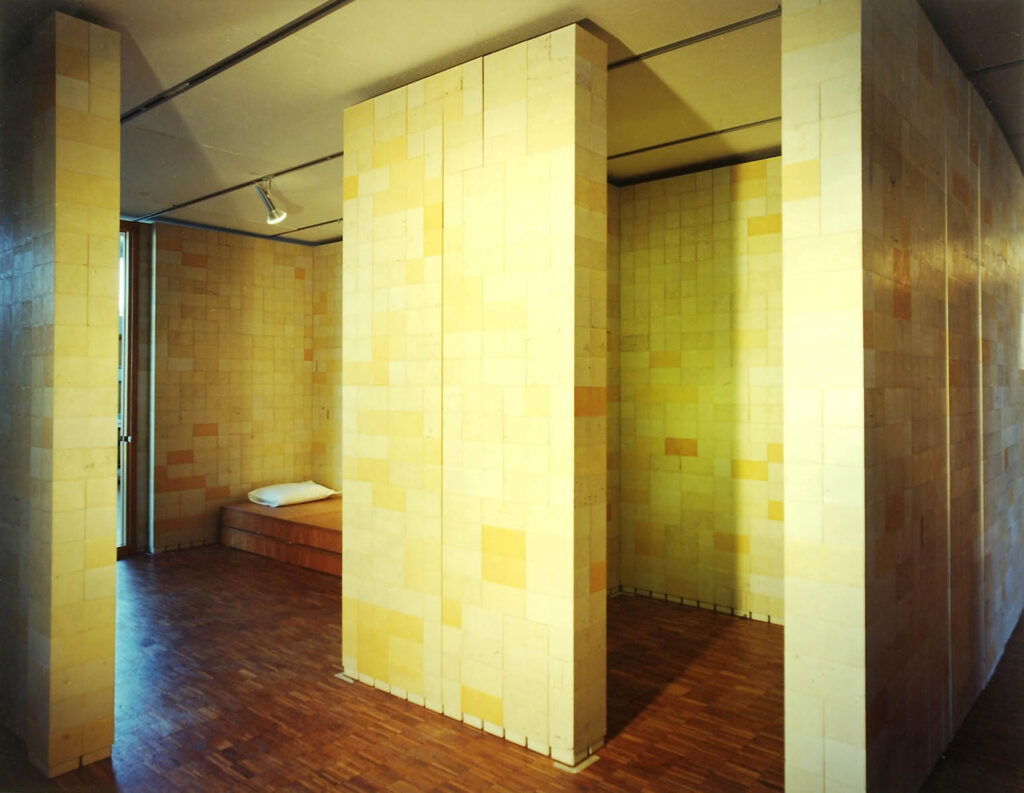
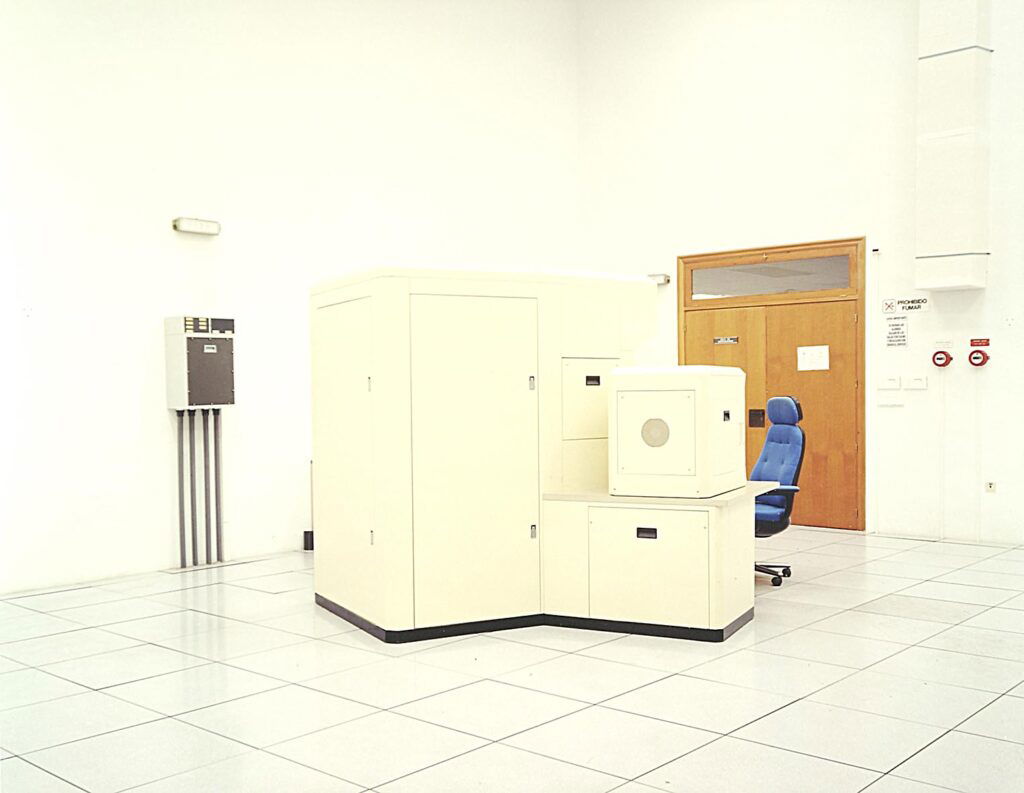
Pia Lanzinger
“The wide-angle perspective gives the empty interiors a stage-like effect that shows us the artificiality of the rooms, which almost seem like scientific specimens. …But are they really interiors? Clouds pass by the wallpaper, the full moon rises over trees and curtains, wild geese fly along the walls, and the primeval forest with its inhabitants begins just behind the hydroponic plants of a waiting room. Lynne Cohen confronts us with a mixture of art, furniture, wall panelling, cardboard figures and texts to which we are exposed every day without consciously registering it, but through which behavioural instructions are nevertheless conveyed to us; clichés, both of classical and modern art, are gathered in the rooms, turning them into dubious museums: A Mondrian-style bar, the outline figures of Marey, wearable bricks by Broothaers, a winter landscape by Pieter Brueghel, the clouds of Margritte or the jungle of Henri Rousseau. ”
It is important to Cohen himself that the “images are infused with sadness and humour” and that they “reveal a struggle between reality and illusion, between believability and simulation”. The interiors show our hopes and dreams, and at the same time how our environment contradicts our desires and thus influences the way we live. Her work is described as “archeology of contemporary interiors”.
